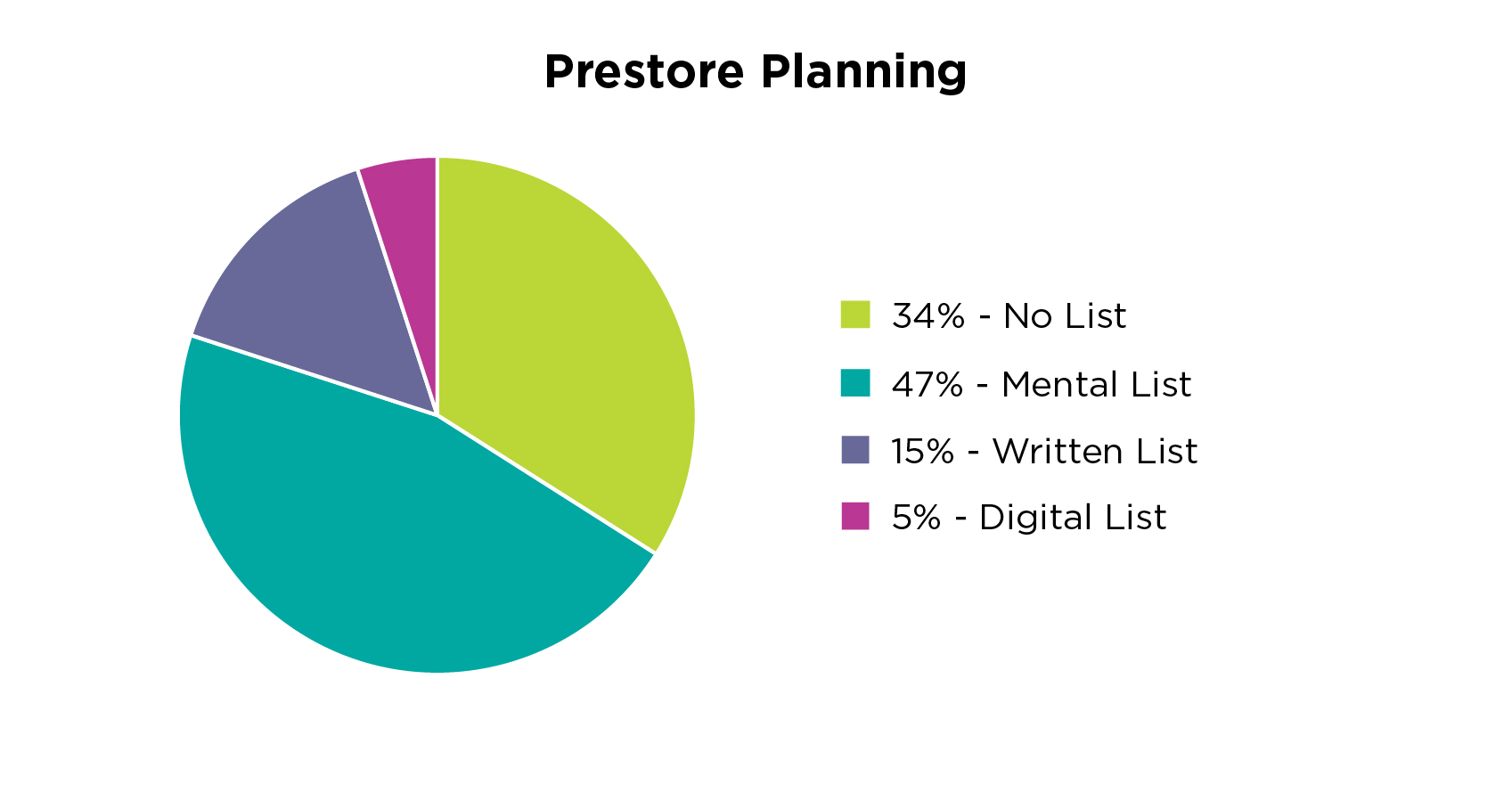It's no secret that product packaging and point of purchase (POP) displays play crucial roles in any purchase experience, but what may go overlooked is precisely how influential these forces are.
The importance of packaging and displays can be observed in mass merchant stores, such as Walmart and Cost-Co. Studies show that purchase planning is at a record low, pointing to the reality that more and more people are buying products on a whim. Shoppers are exchanging meticulous lists and calculated foresight for general ideas and happenstance urges.
A study performed by the Point of Purchase Advertising International (POPAI) reveals that less and less people are planning their purchases, making impulse buying more common and giving POP advertising an upper hand when it comes to influencing buyers’ decisions.
According to the report, 34% of shoppers make no list, 47% create a mental list, 15% make a written list, and 5% make a digital list. Over time, proportion of no-listers and mental-listers are expected to grow.
As the POPAI Report shows, instore decision rates are also at a high (82%), with projections to grow in the future. Decision behaviors can be divided into the following four categories:
- Specifically Planned: shoppers know exactly what brands and products they wish to purchase
- Generally Planned: shoppers know what they generically want, but not according to brand
- Substitutes: purchases that were specifically named prior to shopping, but the actual purchase reflects a different brand or product
- Unplanned: purchases not mentioned prior to shopping and bought on an impulse
Together, the Generally Planned, Substitute, and Unplanned categories make up the instore decision categories.
With instore decision rates on the rise, the instore experience is more and more important. From circulation patterns, store layout, and aisle configurations to product placement, customer service, and wait times, shoppers’ purchases have a greater potential to be influenced.
One study by Miller Zell states that 53% of its participants believe instore experience is at least somewhat important on purchase decisions. 24% stated that instore signage is very to extremely important.
In the same study, instore communications ranked higher that out of store communications. Notably, end of aisle signage and displays, shelf strips, and standalone merchandizing displays each ranked higher than direct mail and newspaper advertising, as well as outdoor banners.
What does this mean?
More marketers are turning and should turn to instore experiences to sell their products.
Packaging, display, and signage design will be an even greater differentiator between brands and products.
Design has been the differentiator for a long time, but with digital printing it’s execution is now easier than ever before.
About ColorHub:
ColorHub is a B2B digital print sheet feeder for the corrugated packaging, display, and signage markets. In simpler terms, we print high quality graphics onto corrugated (cardboard) sheets that are then sold to corrugated plants to be converted into boxes, displays, and signs for their customers. With state-of-the-art technology, we boast a wickedly efficient print process, allowing artwork to flow directly from a computer to the print press. We eliminate the cost and time associated with print plates and press setup, enabling dramatic speeds and low volumes as well as creative change without changeovers.


